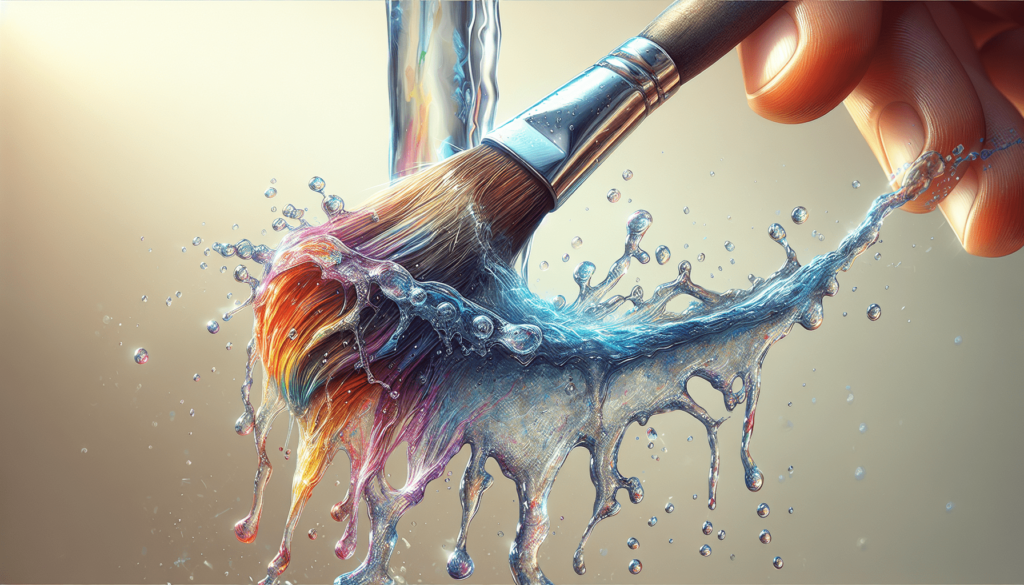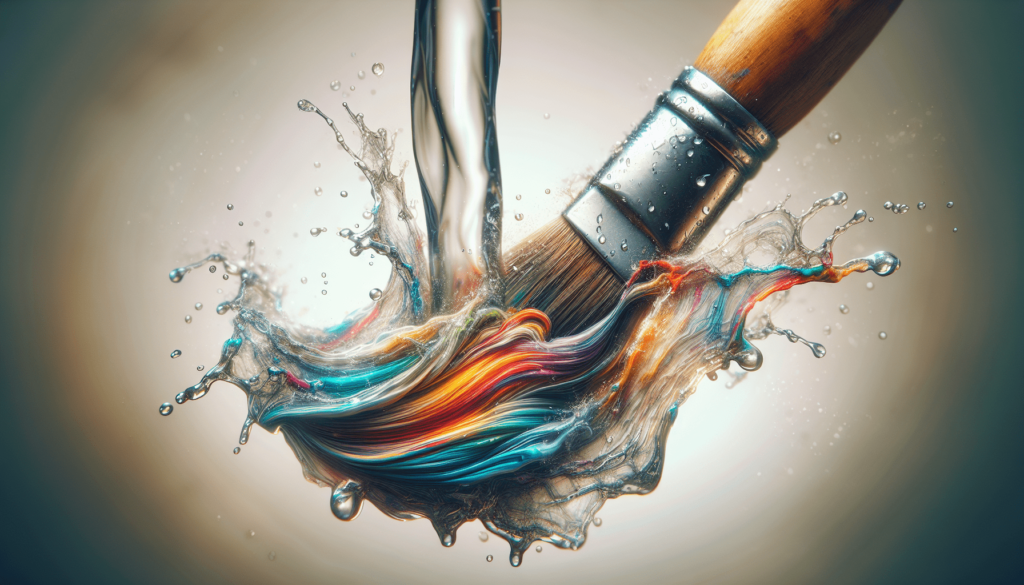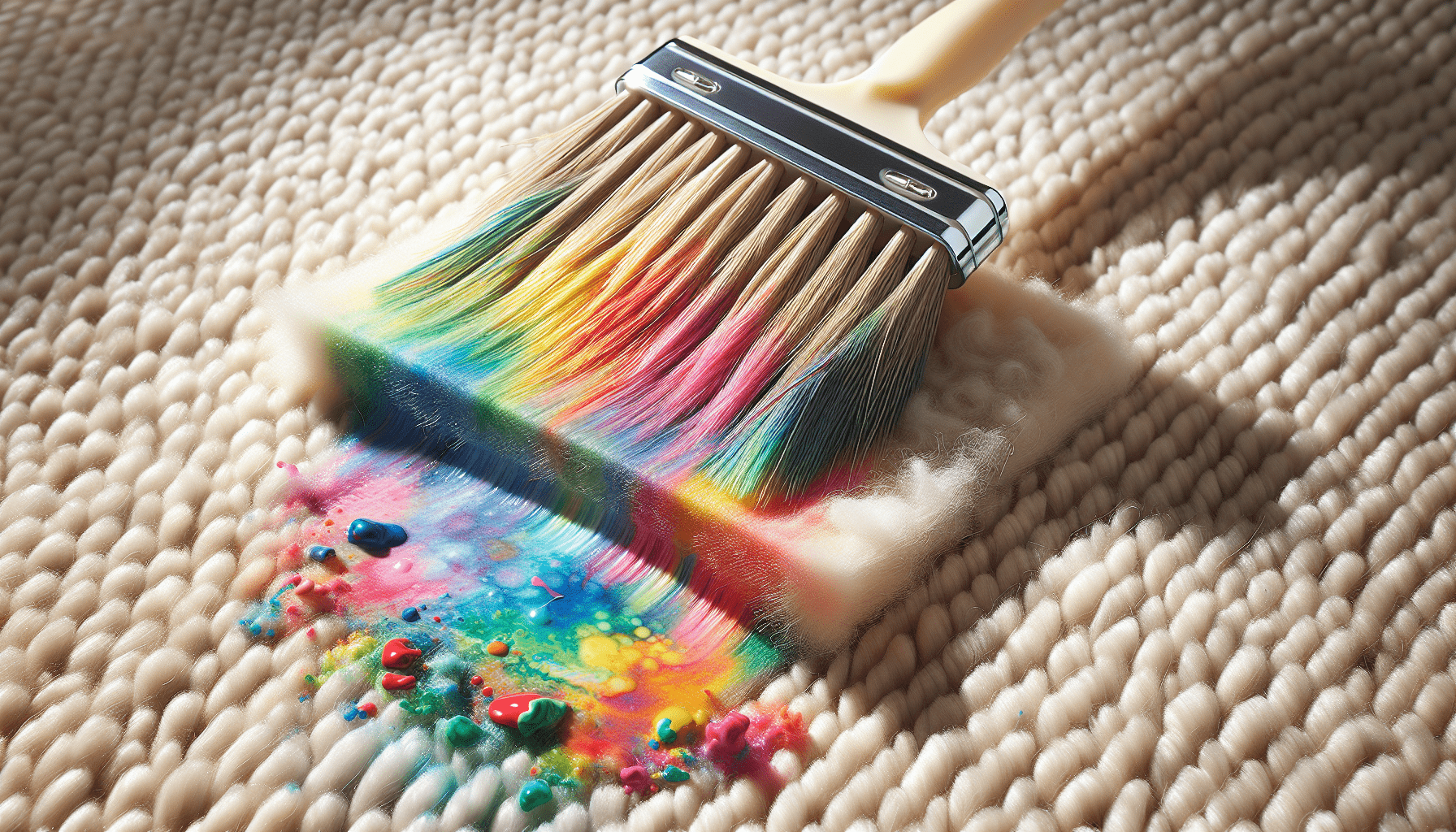In the process of creating beautiful watercolor artworks, the condition of your paint brushes plays a crucial role in maintaining both the quality of your work and the longevity of your tools. Properly cleaning your watercolor paint brushes not only preserves their bristles and shape but also ensures that each stroke remains precise and true to color. This guide will provide you with clear, step-by-step instructions on how to effectively clean your watercolor paint brushes, ensuring they remain in top condition for your creative endeavors. Have you ever wondered how to properly clean your watercolor paint brushes to ensure their longevity and maintain their performance? Watercolor brushes are an essential investment for any artist, and treating them with the care they deserve is crucial. In this article titled “How To Clean Watercolor Paint Brushes,” we’ll delve into the best practices for cleaning, drying, and storing your watercolor brushes to keep them in pristine condition.

Understanding the Importance of Clean Brushes
Maintaining clean brushes is vital not only for the longevity of your tools but also for the quality of your artwork. Dirty brushes can accumulate paint residue, leading to muddy colors and can damage the delicate bristles over time.
Effects of Using Dirty Brushes
Using dirty brushes can significantly impact your paintings. You might experience unintended color mixing, which can ruin the vibrancy and clarity of your work. Moreover, paint buildup on the ferrule can cause the bristles to splay, compromising the brush’s precision.
Longevity and Performance of Brushes
A well-maintained brush will serve you for years. Proper cleaning helps preserve the shape and integrity of the bristles, ensuring consistent performance. Brushes that are cared for correctly will remain soft, flexible, and capable of producing fine lines and broad strokes alike.
Materials Needed for Cleaning
Before diving into the cleaning process, gather the necessary materials to ensure you have everything you need.
| Material | Purpose |
|---|---|
| Lukewarm Water | Removes paint residue from bristles without damaging them |
| Mild Soap | Gentle cleaning agent for breaking down stubborn paint |
| Brush Cleaner Mat | Textured surface to help thoroughly clean bristles |
| Paper Towels | Absorb excess water post-cleaning |
| Brush Holder | Keeps brushes in the proper shape as they dry |
| Container | Holds water and soap for the cleaning process |
Having these materials at hand will streamline the cleaning process and help you achieve the best results.
Techniques for Cleaning Watercolor Brushes
Cleaning your watercolor brushes involves more than just rinsing them under water. Let’s go over the step-by-step techniques that will keep your brushes like new.
Step 1: Rinse with Lukewarm Water
Begin by rinsing your brush under lukewarm water. Avoid using hot water as it can cause the glue holding the bristles to loosen. Hold the brush bristles-down to prevent water from entering the ferrule and damaging the handle.
Step 2: Gently Lather with Soap
After the initial rinse, apply a small amount of mild soap to your fingers or a brush cleaner mat. Gently lather the brush in circular motions, paying attention to avoid splaying the bristles.
Step 3: Rinse Thoroughly
Rinse the brush thoroughly under lukewarm water until all the soap and paint residue are removed. Ensure the water runs clear to confirm the brush is clean.
Step 4: Pat Dry
Pat the brush dry with a paper towel. Refrain from rubbing the bristles as it can cause damage. Instead, blot gently to remove excess water.
Step 5: Reshape the Bristles
While the brush is still damp, reshape the bristles gently with your fingers. This step is crucial for maintaining the original shape and performance of the brush.
Step 6: Dry Horizontally or Vertically
Place the brush horizontally on a paper towel or use a brush holder to dry it vertically, bristles pointing downward. Avoid leaving brushes to dry upright as water can seep into the ferrule and weaken the adhesive.
Specialized Cleaning for Different Brush Types
Not all watercolor brushes are created equal. Different types of brushes may require specific cleaning methods to ensure optimal care.
Natural Hair Brushes
Natural hair brushes, such as sable or squirrel, are known for their softness and excellent paint retention. However, they are more delicate than synthetic brushes.
- Cleaning: Use a mild soap or specialty brush cleaner.
- Rinsing: Thoroughly rinse with lukewarm water.
- Drying: Blot gently with a paper towel and reshape before drying.
Synthetic Brushes
Synthetic brushes are typically more durable and easier to clean. They can withstand more rigorous cleaning without damage.
- Cleaning: Regular soap works fine, but avoid harsh chemicals.
- Rinsing: Ensure all soap residues are removed.
- Drying: Pat dry and reshape as with natural brushes.
Combination Brushes
Combination brushes, containing both natural and synthetic fibers, should be treated with the care appropriate for natural hair brushes.
- Cleaning: Use mild soap suitable for natural fibers.
- Rinsing: Rinse thoroughly with lukewarm water.
- Drying: Follow the same drying steps as for natural hair brushes.

Tips for Maintaining Brushes
Proper cleaning is just one aspect of maintaining your watercolor brushes. Here are some additional tips to keep your brushes in top shape.
Avoid Overloading the Brush
Avoid loading your brush with excessive paint, as it can make cleaning more difficult and can damage the bristles.
Regular Cleaning
Clean your brushes immediately after use to prevent paint from drying on the bristles and ferrule.
Proper Storage
Store your brushes properly. Use a brush holder or a canvas brush roll to keep them safe and maintain their shape.
Periodic Deep Cleaning
Perform a deep cleaning periodically to remove any residual paint or soap from the bristles. Use a brush cleaner mat for this purpose.
Troubleshooting Common Issues
Even with the best care, you might encounter some issues with your brushes. Here’s how to troubleshoot common problems.
Hardened Bristles
If your brush bristles harden, soak them in lukewarm, soapy water for a few minutes, then rinse and reshape them.
Splayed Bristles
Splayed bristles can often be fixed by reshaping them with your fingers and leaving the brush to dry horizontally.
Loose Ferrule
If the ferrule becomes loose, reattach it using a tiny amount of strong adhesive, taking care to not affect the bristles.
Extending the Life of Your Watercolor Brushes
Extending the life of your watercolor brushes is entirely within your control with proper maintenance and care.
Seasonal Checkup
Conduct a seasonal checkup of your brushes to ensure there are no damaged, frayed, or loose elements that need attention.
Avoid High Temperatures
Never expose your brushes to high temperatures or direct sunlight as this can cause the glue in the ferrule to break down and the bristles to dry out.
Use Brush Cleaner Solution
Consider using a professional brush cleaner solution occasionally to give your brushes a thorough cleanse.
Final Thoughts
Proper care and maintenance of your watercolor paint brushes are essential for achieving the best results in your artwork. By adopting the cleaning techniques and tips outlined in this article, you can ensure your brushes serve you well for years to come. Remember, the longevity and performance of your brushes directly correlate with how well you take care of them.
By taking the time to clean, dry, and store your brushes correctly, you are not only preserving the integrity of your tools but also investing in the quality of your artistic outputs. Happy painting!



